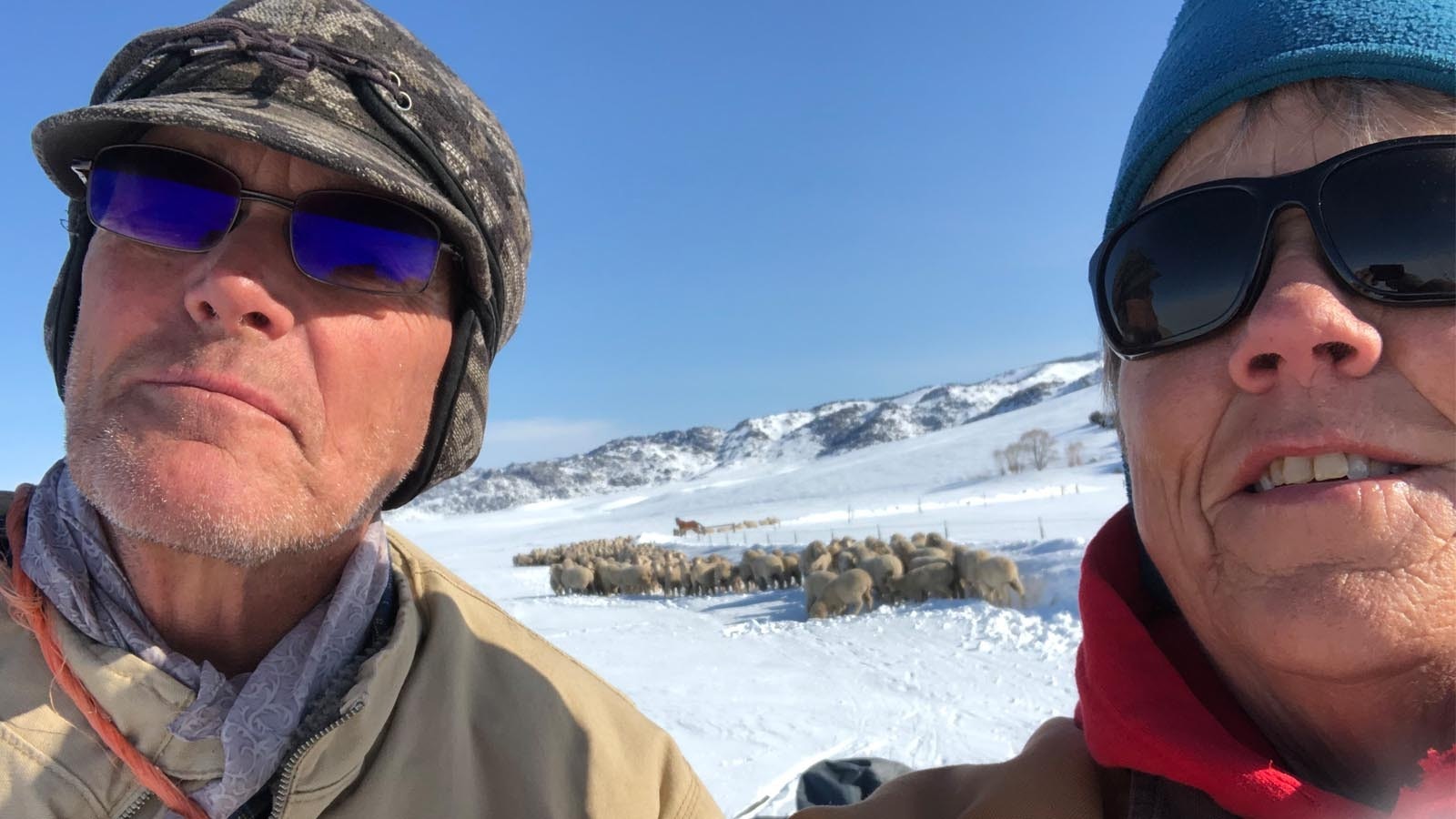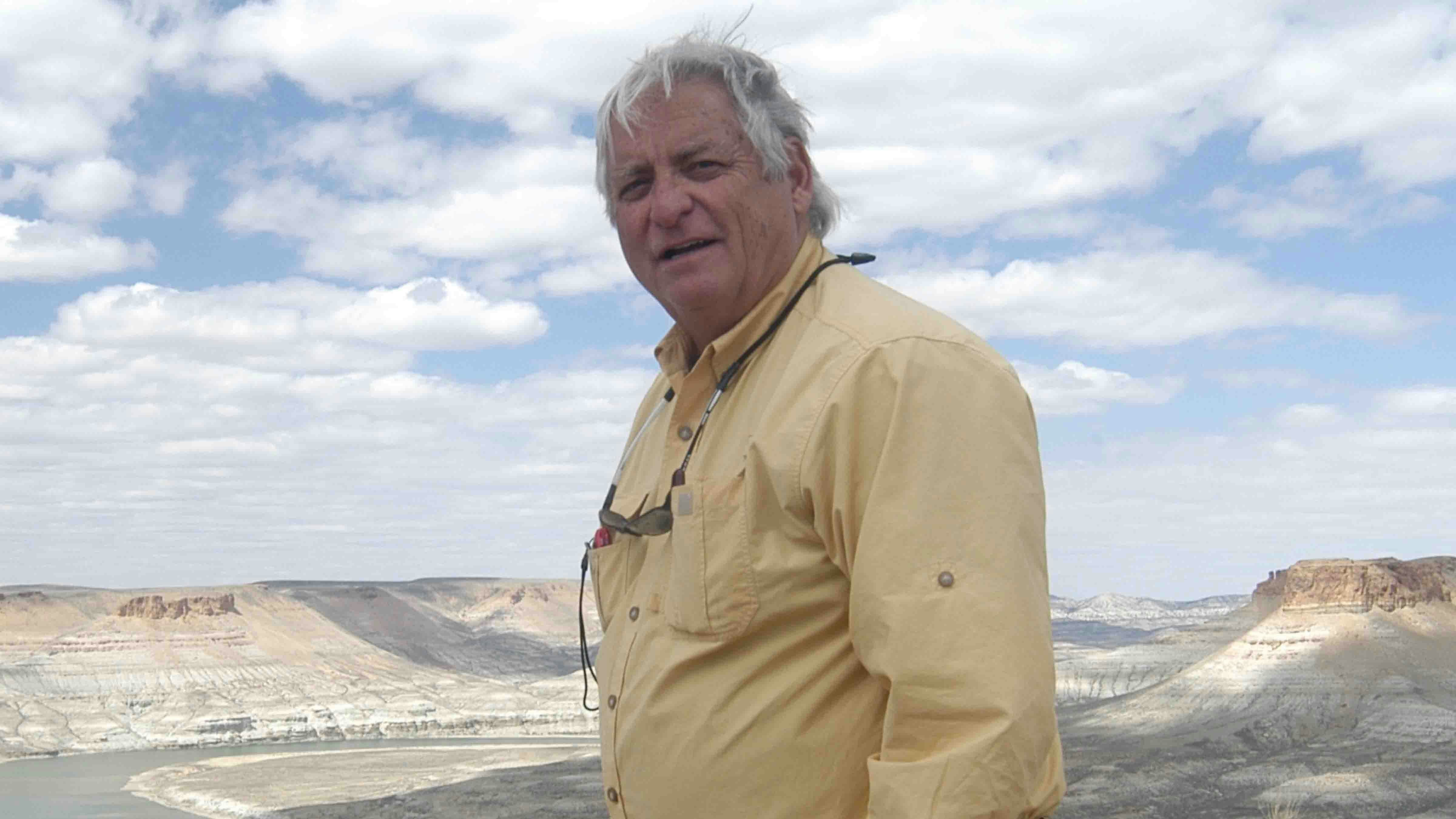Just when we thought spring might be coming soon, last Friday afternoon we got hit by another winter storm, with new snowfall accompanied by winds that lasted nearly 36 hours.
As the storm progressed, our emergency hay stash in the ranch yard was depleted, one truck was buried in a snowdrift below the crest of the hill on the other side of the hay stack, the plow truck and its broken axle was parked on this side of the stack, and there was one heck of a lot of snow between the sheep flock and the stackyard.
Saturday
By Saturday morning, we knew things were only going to get worse, so we fed the sheep flock in the ranch yard shortly after daybreak, scattering the day’s worth of feed we’d stashed there in preparation for the storm. The wind-driven snow hitting the skin on our faces was like being hit repeatedly with tiny needles, so we hurried to get the animals taken care of.
We broke trail in the truck out to the haystack, getting another day’s worth of hay trucked back to a pen near the house before the wind picked up more speed. Using a combination of multiple chains and tow straps, we managed, jerk-by-jerk, to pull the stuck truck out of its snowy burial site and park it beside the haystack before making the last perilous trip back to the house.
Since we couldn’t even see the tire tracks we’d just made about 20 minutes prior, we celebrated making it safely home with shots of whiskey. A half-hour later, the road completely disappeared as the wind continued to build drifts and the landscape was engulfed in white. That evening I contacted a friend about bringing in some big equipment to open our road but was told he wouldn’t be able to get to us for three days, which I said would be fine.
Jim and I are the only human residents at the ranch, and we have all the supplies we need, so being snowed in for a few days isn’t a big deal or unexpected. There would be people all over the county who would have much greater need for getting plowed out and waiting a few more days wouldn’t bother us. Besides, facing challenges builds character, right?
Our only concern was that we knew there wasn’t any way we could move hay to get it to the sheep. We would need to move the sheep to the feed, and there was a lot of snow in the way.
Sunday
The wind finally died down early Sunday morning, and we could see just how much snow had drifted across the landscape on this beautiful but cold wintery morning. The drift in front of our house was at least eight feet deep, so we gave up on using our front door.
While the sheep were eating the last day of feed we had close at hand, we started implementing our plan to get the sheep to their next feeding. We would spend the day making a trail toward the stackyard so that by Monday we could get the sheep all the way to the haystack.
If we could pack down a trail enough that the sheep wouldn’t flounder in deep snow, we could move the sheep to their feed. The bonus is that their sharp hooves would pound out the trail, making each trip easier.
With Jim on skis, and me on snowshoes, we trekked out to the haystack, loading some hay onto a large tarp, wrapping it up tightly and dragging it back toward the house with ropes tied around our waists.
Like two draft horses hitched together for the first time and learning to pull equal weight, we worked on some, um, marital character-building. Ha! Not really. We’ve been doing crazy stuff together for nearly 40 years, so we figured it out quickly. The rule was when I holler, we stop.
The first trip, with about 300 pounds of hay in the tarp, was the longest and most difficult since we managed to pull it nearly all the way to the ranch yard. Once we were close, we stopped and dropped armloads of hay onto the ground about every 25-30 feet, while I stomped in my snowshoes, making a firmer trail for the sheep to navigate.
We continued to work through the afternoon on packing the trail and baiting it with hay. Although the temperature never got above about 10° we were sweating, and we tossed our coats onto the tarp instead of wearing them.
At some point during the day, my cell phone slipped out of my jacket pocket and disappeared in the snow. It could have been that time that I fell off the packed trail and popped one of my snowshoes off. I flailed around in the deep snow for a few minutes (more character building) before getting upright back on the trail and reattaching the snowshoe to my boot.
We had baited about half the route before the sheep decided to follow us, taking advantage of the extra feed we’d placed along the way. They moved slowly in a single line, stepping carefully so that they stayed on the packed trail, but gradually expanding the width of the trail as the flock moved.
We returned to the house late in the afternoon tired, but knowing we’d made real progress, again celebrating with shots of whiskey and hot baths. When we had to do it all again the next day, the trail we’d already packed would make things much easier.
Monday
The temperature hovered right around zero when we set off down the trail Monday morning on our skis and snowshoes. By the time we make it to the stackyard gate, the sheep were slowly trailing along behind us at their own volition.
Jim and I took turns shoveling out some deep drifts and stomping snow so that none of the sheep would fall and be trapped or trampled in this last stretch into the stackyard. We had to hurry to fork hay out onto the trail and succeeded in getting the sheep to about half the feed they needed.
We then used the truck parked at the stack to retrieve more hay to scatter in the one stretch of mostly open roadway. We then stationed the truck, and Fly the herding dog, between the flock and the haystack to protect the stored hay while the sheep fed nearby.
We spent the next few hours listening to the radio in the truck and playing with the livestock guardian dogs while letting the sheep eat their fill. When the sheep turned to start back down the trail to water, we slowly pushed the rest of the flock out of the way and closed the gates. The sheep had packed the trail enough that I was able to trudge back to the house carrying the snowshoes instead of wearing them.
We were nearly back to the sheep pen when we came around the corner and Jim saw my cell phone sticking out of the snow. The sheep flock had trailed over the top of it twice, packing it with snow, but its protective cover kept it intact. We had more shots of whiskey to celebrate our heightened characters and the day’s achievements.
Tuesday
We expect that equipment will arrive and open our road today. Regardless, we’ve got a good trail in place so that we can get the sheep their feed this morning. Although I’ve looked at this experience through the lens of humor, but there are plenty of things about it that aren’t funny, including the saddle horse that slipped and fell in the storm, and then slipped and fell again while he was trying to get back upright. He’s healing up, but something as simple as a slip could have ended his life. These storms and their aftermath are serious, for both animals and humans.
Back in early February, my column focused on how extreme winter conditions this year had caused a rangeland emergency for Wyoming livestock producers. Drifting snow trapped livestock herds and prevented the animals from getting to adequate feed, and the amount of plowing done by county road departments and energy companies has been astounding.
The result is that most livestock were saved, rescued off the range in many cases, but there are plenty of ranches that are losing stock right now, as cold winter temperatures and storms continue to pound Wyoming during calving season. You may not be hearing about it, but it’s happening. The disaster continues. Grazing ranges remain buried underneath several feet of snow, and producers continue to truck in more hay from other states as this winter keeps its hold on rangelands.
Once our road is open, we’ll make a run to town to resupply (we’re down to the last two bottles of our whiskey rewards) and get ready for the next storm, due later this week. Sometime in the next month the snow will start melting off (as a friend says, “Mud season is gonna be lit!”) and we can start retrieving all the broken equipment that didn’t survive the winter. We’ll get everything fixed, and ready for next winter. We’ll continue to build character.
Cat Urbigkit is an author and rancher who lives on the range in Sublette County, Wyoming. Her column, Range Writing, appears weekly in Cowboy State Daily.





